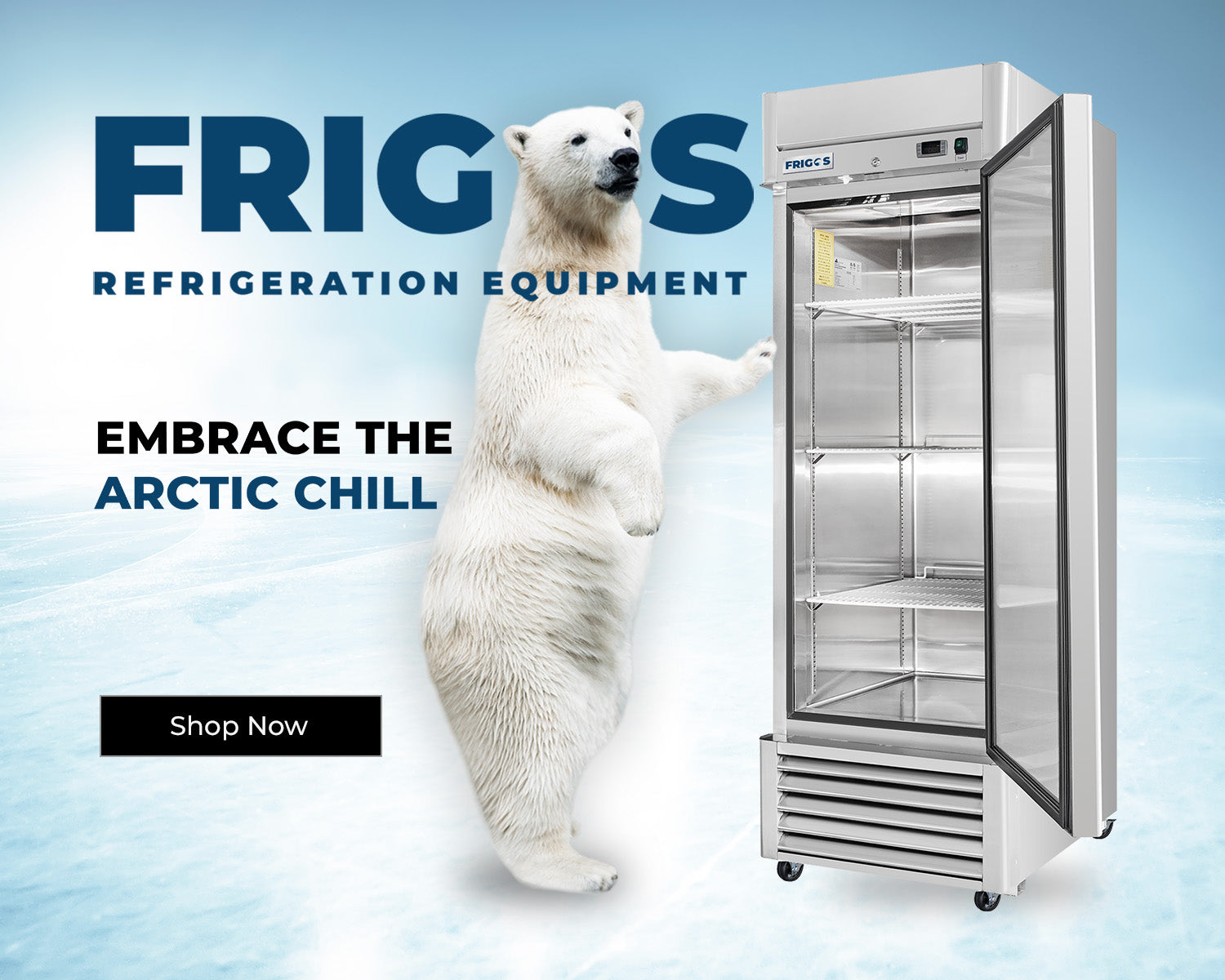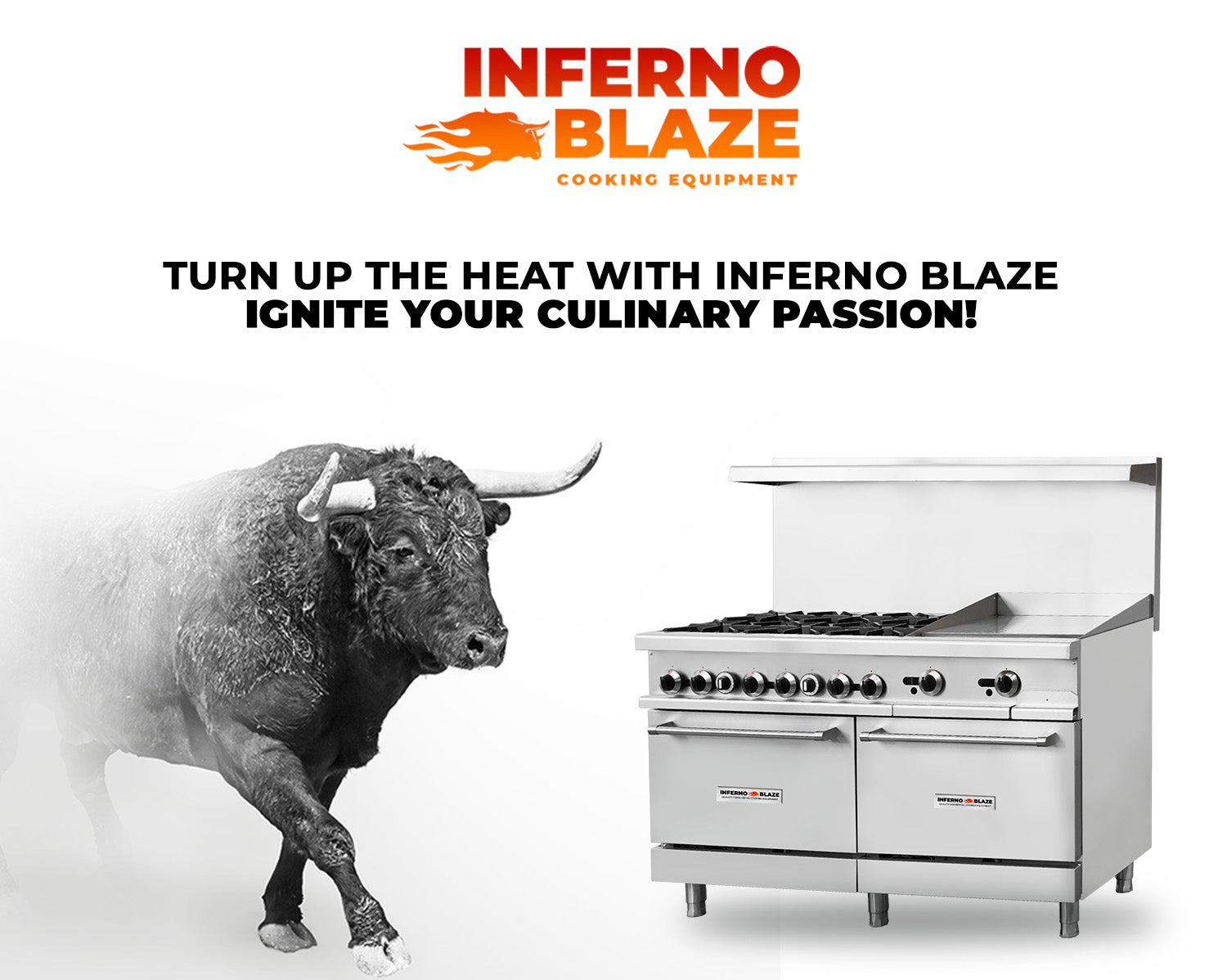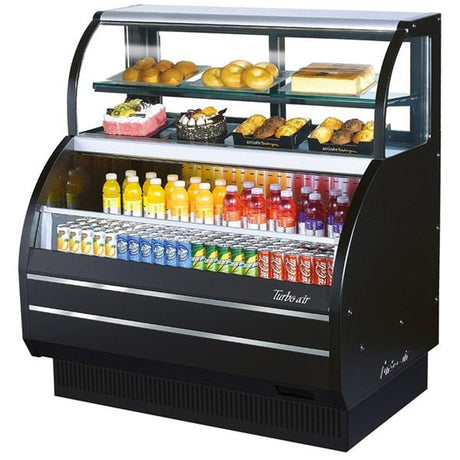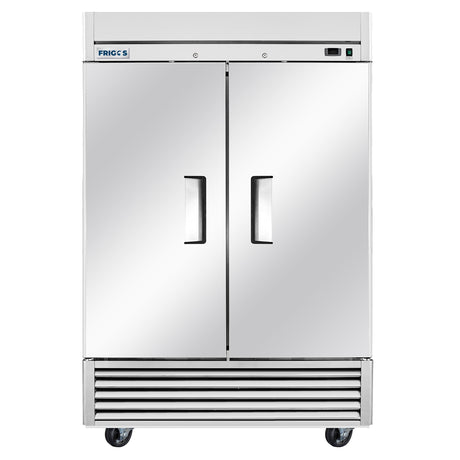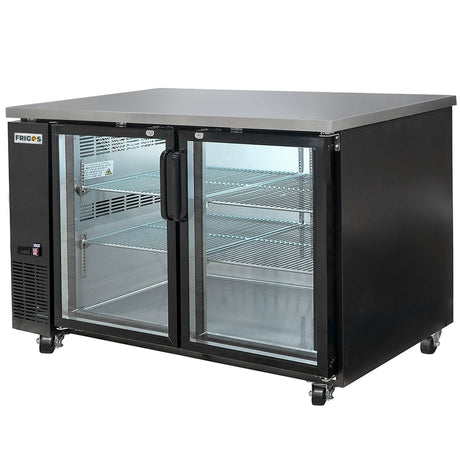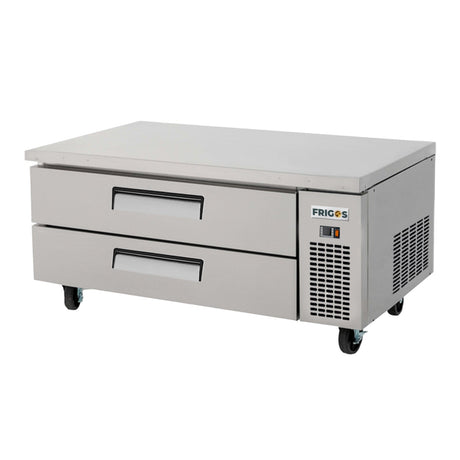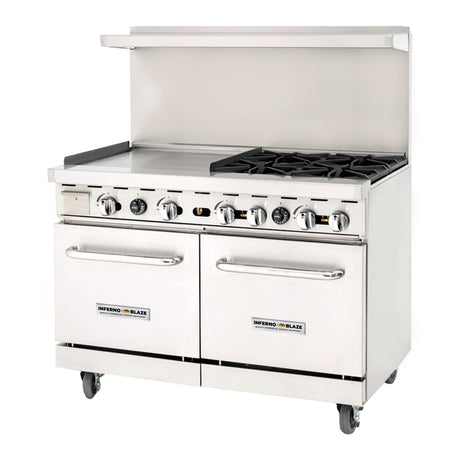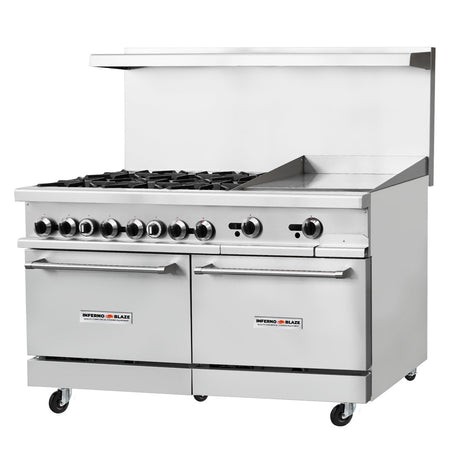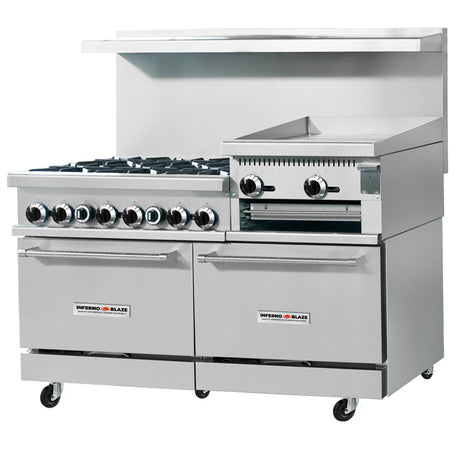Let's be honest: shopping for commercial cooking equipment can feel completely overwhelming. You're staring at spec sheets, comparing brands, and trying to balance a tight budget with the need for high-quality, durable machines. It’s easy to get stuck wondering if you’re making the right call or if a cheaper model will come back to haunt you during a Saturday night rush. This process doesn't have to be so complicated. We’ve created this straightforward guide to cut through the noise. Here, you’ll find clear, actionable steps to help you assess your needs, avoid common pitfalls, and confidently choose the equipment that will become the backbone of your kitchen.
Key Takeaways
- Align Your Purchases with Your Menu and Space: Before you buy, map out your kitchen layout and list your core menu items. This ensures you only invest in equipment that physically fits your workflow and directly supports the dishes you sell most.
- Look Beyond the Sticker Price to Budget Smarter: The true cost of equipment includes installation, energy use, and future maintenance. Factoring in these long-term expenses helps you make a financially sound decision that won't lead to surprise bills down the road.
- Invest in Quality and Protect It with a Plan: Choosing durable, well-built equipment prevents stressful breakdowns during a busy service. Create a simple daily and weekly maintenance schedule to keep your gear running smoothly and extend its lifespan for years.
What Cooking Equipment Does Your Kitchen Need?
Outfitting your commercial kitchen is a big deal. The cooking equipment you choose is the heart of your operation, directly influencing your kitchen’s workflow, your food’s consistency, and your team’s ability to execute your menu. While every restaurant has unique needs based on its concept and cuisine, a few core pieces form the foundation of almost any professional kitchen. Think of these as the non-negotiables that empower your chefs to chop, sear, and sauté their way through a busy service. From the workhorse range to specialized tools that define your signature dishes, let’s break down the essential categories to help you build a functional and efficient kitchen.
Ovens and Ranges
Ovens and ranges are the true workhorses of any professional kitchen. A commercial range, which combines a cooktop and an oven in one unit, is a versatile centerpiece for sautéing, simmering, and baking. Beyond that, you’ll want to consider specialized ovens that match your menu. Convection ovens are fantastic for bakeries and roasting, as they use fans to circulate hot air for fast, even cooking. For pizzerias or artisan bread makers, a deck oven provides the intense, direct heat needed for a perfect crust. Don’t forget smaller essentials like high-powered microwaves for quick heating and commercial toasters if you serve breakfast or sandwiches. Your choice here sets the tone for your entire cooking line.
Fryers and Grills
If your menu features crispy appetizers, juicy burgers, or perfectly seared steaks, then fryers and grills are must-haves. A commercial deep fryer is essential for turning out consistently golden-brown favorites like french fries, wings, and onion rings. They come in various sizes, from compact countertop models to large floor units that can handle a high-volume rush. Grills, meanwhile, are all about flavor. A charbroiler gives meats and vegetables those classic grill marks and a distinct smoky taste. A flat-top griddle is incredibly versatile, perfect for cooking everything from pancakes and eggs to Philly cheesesteaks. Consider how many fried or grilled items you offer to determine the size and capacity you’ll need.
Food Holding and Warming Equipment
A smooth service depends on more than just cooking; it’s also about timing and temperature. Food holding equipment is essential for keeping prepared food at a safe and appetizing temperature between the time they’re cooked and when they’re served. This category includes everything from steam tables and heat lamps on the pass to insulated holding cabinets that keep large batches of food ready for service. Using this equipment properly ensures that the last dish plated is just as hot and fresh as the first. It’s an investment in food quality and safety that helps your kitchen stay ahead during peak hours without sacrificing the customer experience.
Specialty Equipment for Your Cuisine
Beyond the basics, your specific menu will dictate the specialty equipment you need to bring your vision to life. Your equipment choices should always fit the type of food you make. A bakery can’t function without commercial mixers and proofing cabinets, while a pizzeria needs a dedicated pizza prep table to streamline its workflow. An Italian restaurant might invest in a pasta cooker, a deli will require a meat slicer, and a café will lean heavily on its espresso machine and panini press. Before you buy, make a detailed list of your signature dishes and identify the specialized tools that will help your team prepare them efficiently and consistently.
How to Choose the Right Commercial Cooking Equipment
Picking out new cooking equipment is more than just a shopping trip—it's a strategic decision that shapes your kitchen's entire operation. The right gear can streamline your workflow, improve food quality, and directly impact your bottom line. But with so many options, how do you make the best choice? It comes down to asking the right questions before you buy. By focusing on a few key areas, you can confidently select equipment that fits your space, menu, and budget for years to come.
Measure Your Kitchen Space and Layout
Before you fall in love with a six-burner range, grab a tape measure. It sounds basic, but you’d be surprised how many people overlook this step. Measure the exact footprint where the equipment will go, but don’t stop there. Consider the full "door swing" radius for ovens and refrigerators, and ensure there's enough clearance around the unit for proper ventilation and cleaning. Think about your kitchen's workflow, too. How will this new piece fit into your team's daily dance? Planning your kitchen layout effectively can prevent bottlenecks and keep service running smoothly during the busiest shifts.
Match the Equipment to Your Menu
Your menu is the ultimate guide for every equipment purchase. The gear you choose should directly support the dishes you plan to create, making your team more efficient and effective. If you’re running a pizzeria, a high-capacity deck oven is non-negotiable. If you’re famous for your fried chicken, you’ll need reliable, high-volume fryers. Think about your best-selling items and the steps required to make them. Does a new piece of cooking equipment remove a tedious step or allow you to produce that dish faster and more consistently? Aligning your equipment with your culinary vision ensures you’re investing in tools that truly work for you.
Calculate Energy and Operating Costs
The price tag on a piece of equipment is only the beginning of its total cost. Energy and utility bills are a major ongoing expense, and an inefficient appliance can drain your profits month after month. When comparing models, look for the ENERGY STAR certification, which identifies equipment that meets strict energy performance standards set by the EPA. An energy-efficient model might have a higher initial cost, but the long-term savings on your utility bills often provide a significant return on your investment. Factoring in these operating costs from the start helps you make a smarter financial decision for your business.
Prioritize Durability and Build Quality
When you’re working with a tight budget, it can be tempting to choose the cheapest option available. However, opting for lower-quality equipment often leads to higher costs down the road from frequent repairs and eventual replacement. Think of your equipment as a long-term investment in your business's success. Look for durable materials like stainless steel, read reviews from other restaurant owners, and ask about the warranty. Poorly made equipment has a knack for breaking down at the worst possible moment, and the cost of lost business during a dinner rush far outweighs the initial savings from a cheaper model.
Check Your Power and Infrastructure
This is a critical step that can save you from major headaches. Before you finalize a purchase, confirm that your kitchen can support the new equipment's utility requirements. Does that new convection oven need a specific voltage or a three-phase electrical connection? Does your gas line have the capacity for an additional range? Overlooking your kitchen’s existing infrastructure can lead to costly last-minute electrical or plumbing work, or worse, equipment that you can’t even use. It’s always a good idea to consult with an electrician to verify your power supply and ensure a smooth, safe installation.
Comparing Top Commercial Cooking Equipment Brands
Once you have a clear idea of what you need, it’s time to start comparing brands. The right brand for your kitchen will offer a balance of performance, reliability, and value that fits your specific operational demands. Think of this as a long-term partnership—you want equipment that will work as hard as you do, day in and day out. The goal is to find a manufacturer that not only meets your menu's requirements but also aligns with your budget and kitchen workflow.
Explore Kitchen Pro's Cooking Equipment
At Kitchen Pro, we focus on providing commercial-grade appliances designed to handle the high-volume demands of a professional kitchen. Our selection of Cooking Equipment is curated for durability and consistent performance, ensuring your team can execute service flawlessly. From powerful ranges that form the heart of your cook line to specialized fryers and grills, every piece is built with high-quality materials that stand up to constant use. We believe that reliable equipment is the foundation of a successful restaurant, which is why we prioritize tools that are not only effective but also built to last.
A Look at Other Industry Leaders
The commercial equipment market is vast, with various brands specializing in different areas. Some manufacturers are known for their high-tech, premium ovens, while others focus on creating workhorse ranges and grills that are simple and incredibly durable. You'll also find brands that cater specifically to high-volume chains or offer entry-level options for new businesses. Understanding this landscape helps you make an informed choice. While exploring, you’ll notice that many successful restaurants invest in equipment that is designed specifically for commercial kitchen needs, ensuring they get the right blend of features and resilience for their unique environment.
Key Features to Compare
When you’re weighing your options, look beyond the brand name and focus on the features that directly impact your bottom line. First, consider durability and build quality—stainless steel construction is often the standard for a reason. Next, check the energy efficiency ratings, as an energy-saving appliance can significantly reduce your utility bills over time. Ease of maintenance is another critical factor; equipment that is simple to clean and service minimizes downtime. Finally, don't overlook multi-functionality. A single piece of equipment that can perform several tasks can save valuable kitchen space and reduce initial costs.
What's the Real Cost of Commercial Cooking Equipment?
When you’re outfitting your kitchen, it’s easy to focus on the price tag of a new range or fryer. But the true cost of your commercial cooking equipment goes far beyond the initial purchase. Think of it as a long-term investment that affects your monthly budget, workflow, and overall profitability. To make a smart decision, you need to look at the complete financial picture, from the day it arrives at your door to its ongoing operational expenses.
Understanding the Initial Price Tag
The sticker price is your starting point, but it’s not the whole story. While it’s tempting to go for the cheapest option, many new restaurateurs find themselves in a bind after investing too heavily in brand-new equipment, which can strain their budget and delay their return on investment. The initial cost reflects the unit’s quality, features, and brand reputation. Your goal is to find a balance between what your menu requires and what your budget can handle. Create a clear budget that prioritizes essential, high-quality pieces that will form the backbone of your kitchen operations.
Factoring in Installation and Setup
Once you’ve bought your equipment, you have to get it installed and running. Don’t overlook these costs. You’ll need to account for delivery fees, professional installation for gas and electrical hookups, and potentially even modifications to your existing space, like upgrading your ventilation system. These setup expenses can add a significant amount to your total investment. Planning for them ahead of time ensures you won’t face unexpected bills that throw your budget off track right from the start.
Planning for Maintenance and Operating Costs
The costs don't stop after installation. Your equipment’s long-term operating expenses will have a major impact on your bottom line. Energy costs are a huge factor, and choosing equipment that isn’t energy-efficient can lead to surprisingly high utility bills. Look for ENERGY STAR certified appliances to save money over time. You should also budget for routine maintenance, cleaning supplies, and potential repairs. A durable, well-maintained machine will always be more cost-effective than a cheaper model that constantly needs fixing.
Exploring Your Financing Options
High-quality commercial cooking equipment is a significant expense, but you don’t have to pay for it all at once. There are several financing routes you can explore to get the tools you need without draining your cash reserves. Many suppliers offer financing plans, or you can look into equipment loans from banks or credit unions. The U.S. Small Business Administration is another great resource for funding options. Leasing is also a popular choice, as it requires less money upfront and may include maintenance in the contract, giving you predictable monthly costs.
Common Buying Mistakes to Avoid
Outfitting your commercial kitchen is a huge step, and it’s easy to get overwhelmed by the options. While you’re focused on finding the right gear, it’s just as important to know what not to do. A few common missteps can lead to long-term headaches, from surprise costs to an inefficient kitchen that slows down service. Let’s walk through the most frequent buying mistakes so you can equip your kitchen with confidence and set your business up for success from day one.
Choosing Price Over Long-Term Quality
When you’re working with a tight budget, it’s tempting to go for the cheapest option available. But choosing cost over quality is one of the biggest mistakes you can make. Poorly made equipment often leads to higher maintenance costs, frequent breakdowns during a busy service, and the need for a full replacement much sooner than you planned. Think of your restaurant equipment as a long-term investment in your business’s future. A durable, well-built machine will perform reliably for years, saving you from the stress and expense of constant repairs. Investing a little more upfront for a quality piece will almost always pay off in the long run through dependability and a longer lifespan.
Ignoring Your Kitchen's Workflow
Your kitchen should operate like a well-oiled machine, with a natural flow from prep stations to the cooking line to the pass. Bringing in a new piece of equipment without considering its place in that flow can create chaos. Forgetting to leave proper landing space next to a fryer or placing a key appliance far from where it’s needed can create bottlenecks and even safety hazards for your staff. Before you buy, map out your kitchen layout. Think about how your team moves during a busy shift. Where will the new equipment live? Will it disrupt movement or make a process less efficient? Planning for workflow ensures your new cooking equipment improves your kitchen’s output instead of slowing it down.
Overlooking Energy Efficiency
The sticker price of a new oven or fryer is only the beginning of its total cost. Choosing equipment that isn’t energy-efficient can lead to inflated utility bills that eat into your profits every single month. When comparing models, look for energy rating information, like the ENERGY STAR certification. These appliances are designed to do the same job using less power, which means significant savings over the life of the equipment. While an energy-efficient model might have a slightly higher initial cost, the reduction in your monthly operating expenses can make it a much smarter financial decision. Lower utility bills mean more money stays in your pocket, helping your bottom line.
Buying Equipment That Can't Handle Your Menu
The heart of your restaurant is your menu, and your equipment needs to be able to bring it to life, day in and day out. It’s critical to match your equipment’s capabilities to your specific culinary needs. As one expert notes, you should carefully review the attributes of each piece of commercial kitchen equipment you intend on purchasing. If your signature dish is a deep-fried whole chicken, a small, light-duty fryer won’t keep up with demand. If you’re an artisan bakery, a standard convection oven may not give you the results you need. Consider your busiest service and your most popular items. Does the equipment have the capacity, power, and features to execute your menu flawlessly every time?
Smart Ways to Buy and Maintain Your Equipment
Outfitting your kitchen is one of the biggest investments you'll make, but the spending doesn't stop once the equipment is installed. Smart purchasing strategies and a solid maintenance plan are essential for managing your budget and keeping your kitchen running smoothly for years to come. By thinking about the total cost of ownership—from the initial price to ongoing upkeep—you can make choices that support your restaurant's long-term financial health. A little planning upfront goes a long way in preventing unexpected breakdowns and costly emergency repairs down the road. Here are a few practical approaches to buying and caring for your commercial cooking equipment.
Find an Authorized Dealer
Working with an authorized dealer is one of the best ways to ensure you’re getting high-quality, reliable equipment backed by a manufacturer's warranty. These suppliers have a direct relationship with the brands they sell, which means they can offer expert advice, genuine parts, and proper service. While it might be tempting to buy from a third-party seller online, you risk ending up with a product that has no warranty or support. An authorized dealer provides peace of mind and serves as a valuable partner, helping you select the right restaurant equipment that fits your kitchen’s specific needs and budget.
Explore Used and Refurbished Options
For new restaurants or those on a tight budget, buying everything brand new can strain your finances. Exploring used and refurbished equipment can offer significant savings, freeing up capital for other essential areas of your business. This approach works well for items that don't have complex mechanical parts, like stainless steel prep tables or shelving. However, be cautious when buying used core appliances like ovens or fryers. It's important to inspect them thoroughly and, if possible, purchase from a reputable reseller that offers some form of guarantee. While the initial cost is lower, you want to avoid equipment that will require frequent and expensive repairs.
Look for Seasonal Sales and Bulk Discounts
Timing your purchases can lead to substantial savings. Keep an eye out for seasonal promotions, end-of-year sales, and holiday deals when suppliers are looking to move inventory. If you're outfitting an entire kitchen or upgrading multiple pieces at once, always ask about bulk discounts. Many dealers are willing to negotiate a better price when you purchase several items together. This strategy allows you to stretch your budget further, potentially letting you invest in higher-quality or more energy-efficient cooking equipment than you originally planned for, which will save you money on utility bills over time.
Protect Your Investment with Proper Care
Commercial kitchen equipment is built to withstand heavy use, but it isn't indestructible. Regular maintenance is crucial to extending the life of your appliances and preventing costly breakdowns during a busy service. Create a daily and weekly cleaning schedule for your staff and ensure they are trained on how to operate each piece of equipment correctly. Sticking to a preventative maintenance plan, including professional servicing for key components, helps protect your investment. A well-maintained machine, like a dependable Frigos Value Series refrigerator, will perform better, use less energy, and serve your kitchen reliably for years.
Related Articles
- Choosing the Right Commercial Kitchen Equipment: A Buyer's Guide
- How to Get the Best Price Restaurant & Kitchen Supplies
- Commercial Range Buying Guide: Tips for Smart Purchases
Frequently Asked Questions
Should I buy new or used cooking equipment? This really comes down to your budget and the specific piece of equipment. For items without complex moving parts, like stainless steel prep tables or sinks, used can be a fantastic way to save money. However, for core appliances like ovens, ranges, and fryers, buying new from an authorized dealer often provides better long-term value. A new unit comes with a warranty, the latest energy-efficiency features, and the peace of mind that you won't be facing unexpected repair bills right after opening.
If I'm on a tight budget, what's the one piece of equipment I should prioritize? Your commercial range is the heart of your kitchen. It's the versatile workhorse where most of your cooking will happen, from sautéing and simmering to searing. If you have to choose where to allocate a larger portion of your budget, investing in a durable, high-quality range that can handle your projected volume is the smartest move. A reliable range ensures your team can execute the core of your menu consistently, which is the foundation of your entire operation.
Why is a manufacturer's warranty so important for commercial equipment? A warranty is your safety net. Commercial kitchens are demanding environments, and even the best equipment can face issues. A manufacturer's warranty protects your investment by covering the cost of repairs or replacement if the unit fails due to a defect within a certain period. Buying from a source without a valid warranty means you are responsible for all repair costs, which can be expensive and lead to significant downtime during a dinner rush.
Can I use a high-end residential appliance in my small commercial kitchen? It’s strongly advised not to. Residential appliances are not built to withstand the constant, heavy use of a commercial setting. They will break down much faster, leading to costly replacements. More importantly, they often don't meet commercial health and safety codes, which can cause you to fail a health inspection and may even void your business insurance policy. Always opt for equipment that is specifically designed and certified for commercial use.
How often do I need to schedule professional maintenance for my equipment? While daily cleaning is a must, scheduling professional maintenance is key to preventing major breakdowns. A good rule of thumb is to have your most critical equipment, like your refrigeration units and cooking line, professionally serviced at least once a year. For high-use items like fryers, you might consider a check-up every six months. This preventative care helps catch small issues before they become expensive emergencies and ensures your equipment runs efficiently for years.






